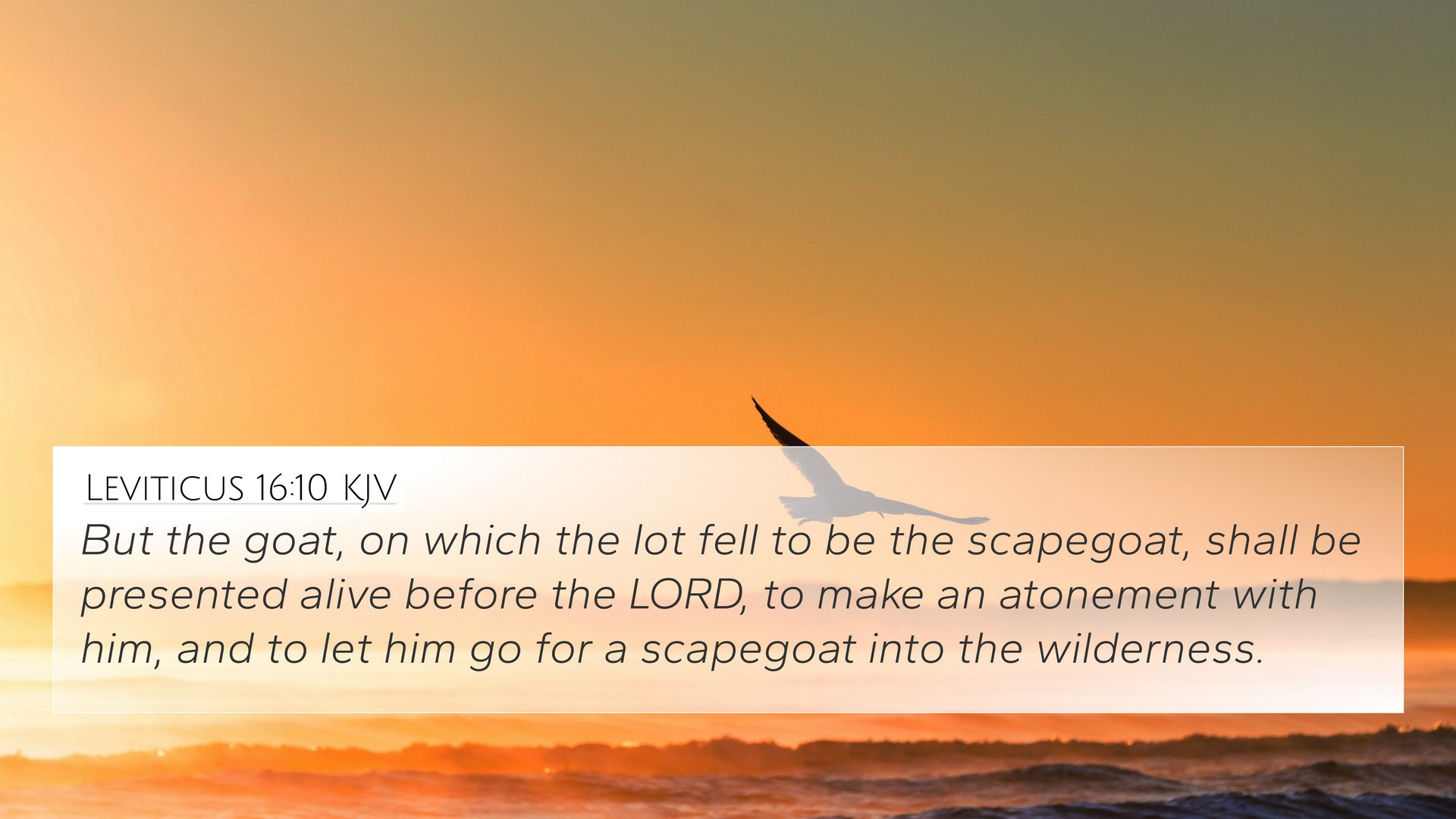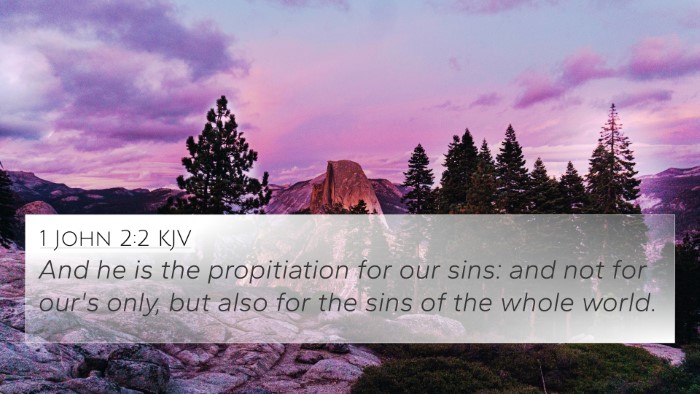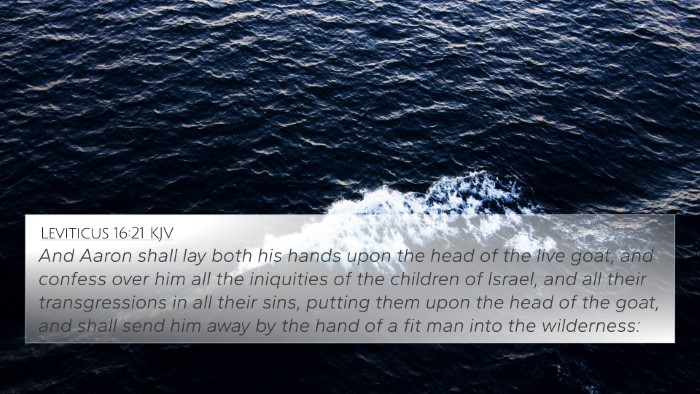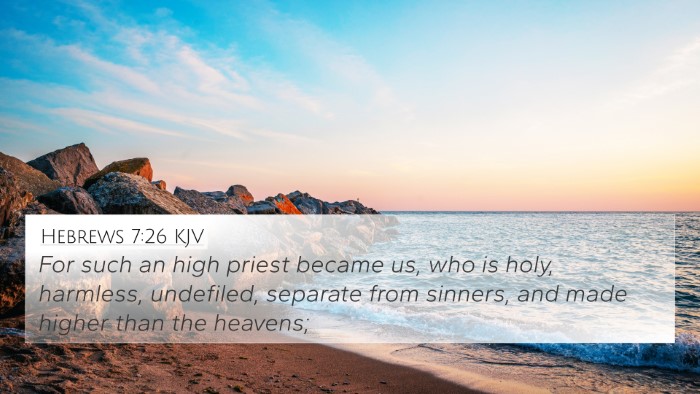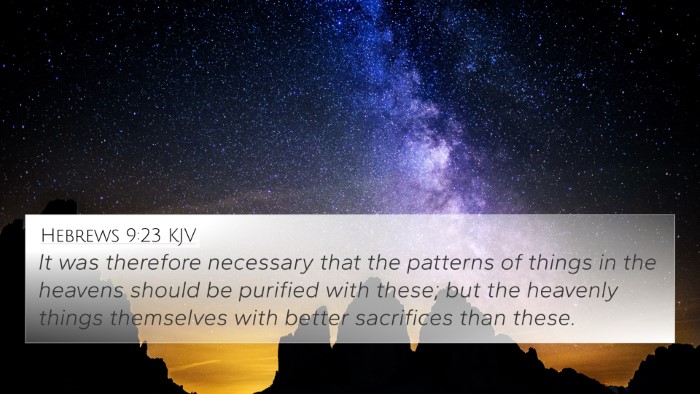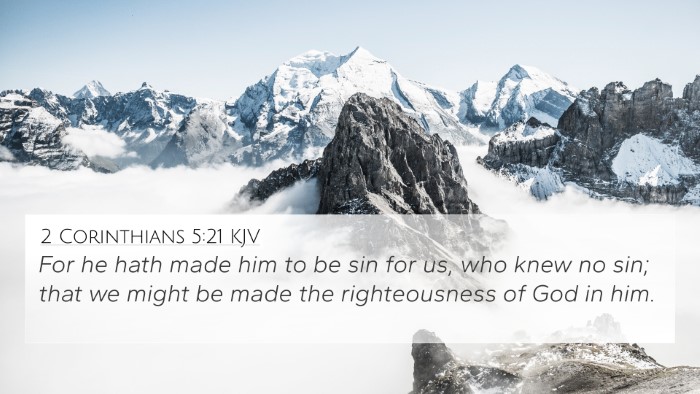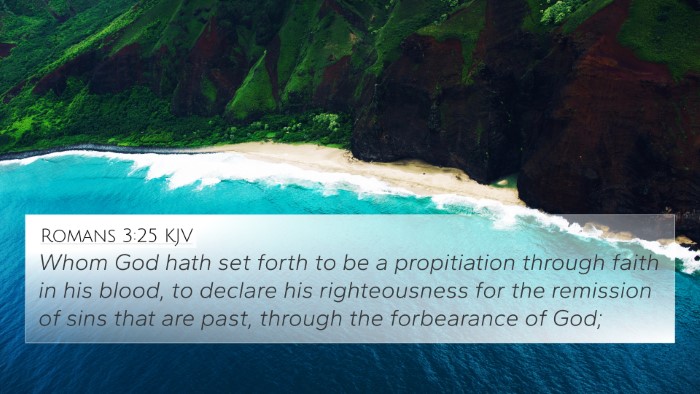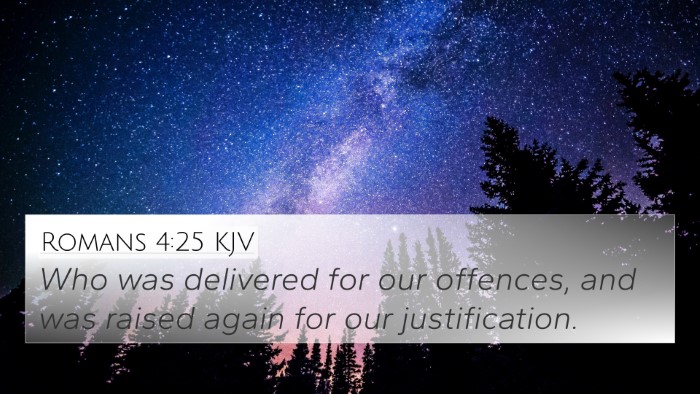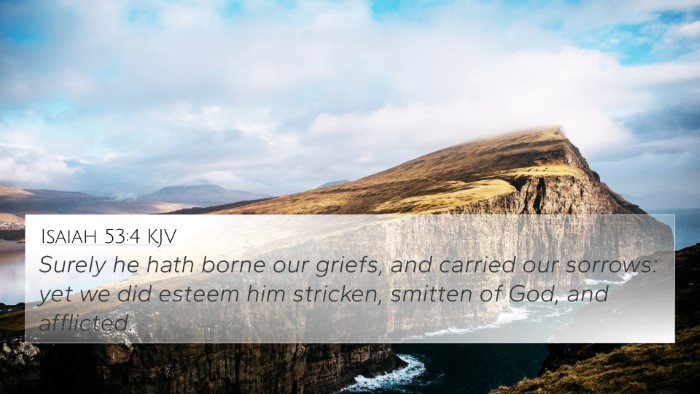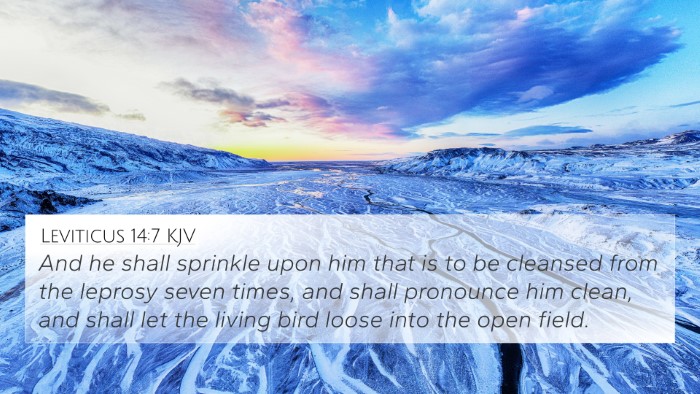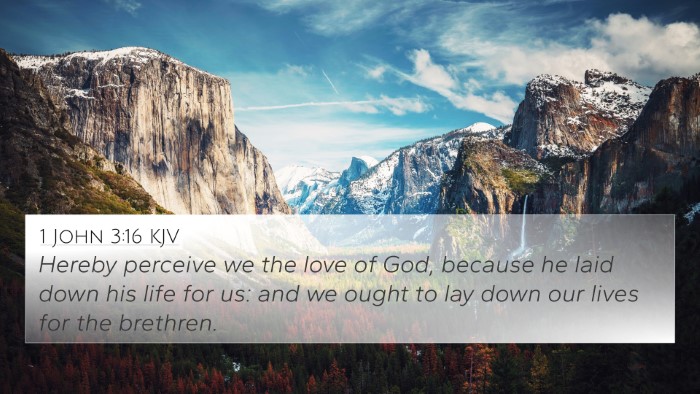Meaning and Interpretation of Leviticus 16:10
Bible Verse: Leviticus 16:10
Leviticus 16:10 states: "But the goat on which the lot fell to be the scapegoat shall be presented alive before the Lord, to make atonement upon it, and to let it go as the scapegoat into the wilderness."
Overview
This verse is part of the ritual of Yom Kippur (the Day of Atonement), where the high priest symbolically transferred the sins of the Israelites onto the scapegoat, which was then sent into the wilderness. This act represents a powerful metaphor for atonement and forgiveness.
Exegesis and Commentary Insights
-
Matthew Henry's Commentary:
Henry explains that the scapegoat serves as a vivid illustration of the expunging of sin. The act of sending the goat away signifies God’s willingness to forgive, removing the sins far from the people. Henry emphasizes that it represents both God's justice and mercy, highlighting the necessity of sacrifice for atonement.
-
Albert Barnes' Notes:
Barnes elaborates on the ritual significance, noting that the scapegoat being alive and driven into the wilderness also indicates the complete removal of sin. He explains that it reflects the necessity of purity in approaching God, reinforcing God’s command for atonement practices in ancient Israel.
-
Adam Clarke's Commentary:
Clarke focuses on the symbolic implications of the scapegoat. He discusses how, by sending the goat into the wilderness, it signifies the total separation of sin from the people. Clarke notes that this ritual foreshadows the work of Christ, who takes away the sins of the world, drawing a parallel to New Testament themes of salvation and atonement.
Thematic Connections and Cross-References
This verse can be linked thematically to several Biblical passages that deal with atonement, sin, and divine mercy:
- Isaiah 53:6: This passage describes how the Lord laid on Him the iniquity of us all, drawing parallels to the scapegoat bearing the sins of the people.
- Hebrews 9:26: It speaks of Christ appearing to put away sin by the sacrifice of Himself, connecting with the concept of sacrifice in Leviticus.
- John 1:29: "Behold the Lamb of God, who takes away the sin of the world," directly ties into the atonement theme.
- Romans 3:25: This verse discusses the propitiation of Christ, which echoes the atonement ritual described in Leviticus.
- 1 John 1:9: Addressing sin and the promise of forgiveness, reflects the intent of the scapegoat ritual for the confession of sins.
- Psalm 103:12: "As far as the east is from the west, so far has He removed our transgressions from us," which captures the essence of the scapegoat's role.
- Hebrews 10:4: Discusses the insufficiency of animal sacrifices, indicating that the shedding of blood must be more potent, hinting at the ultimate sacrifice of Christ.
Importance of Cross-Referencing
The practice of cross-referencing Biblical texts enhances understanding and provides deeper insights into scripture. By examining inter-Biblical connections, readers can uncover rich theological themes and broader narratives that enrich their study.
Tools and Methods for Cross-Referencing
Utilizing tools such as a Bible concordance or a cross-reference Bible study system can vastly improve one's study experience. These resources allow for:
- Identifying connections between Old and New Testament verses.
- Finding detailed cross-references between Gospels and epistles.
- Making comparative studies of themes and teachings across scripture.
SEO Keywords for Enhanced Understanding
Using well-researched keywords enables seekers to find related materials easily, such as:
- How to find cross-references in the Bible.
- Identifying connections between Bible verses.
- Cross-referencing themes found in scripture.
Conclusion
The ritual outlined in Leviticus 16:10 serves as a pivotal moment for understanding atonement in scripture. By studying it along with related verses, we can appreciate the profound implications of forgiveness and the endurance of God’s mercy through every testament of the Bible.
